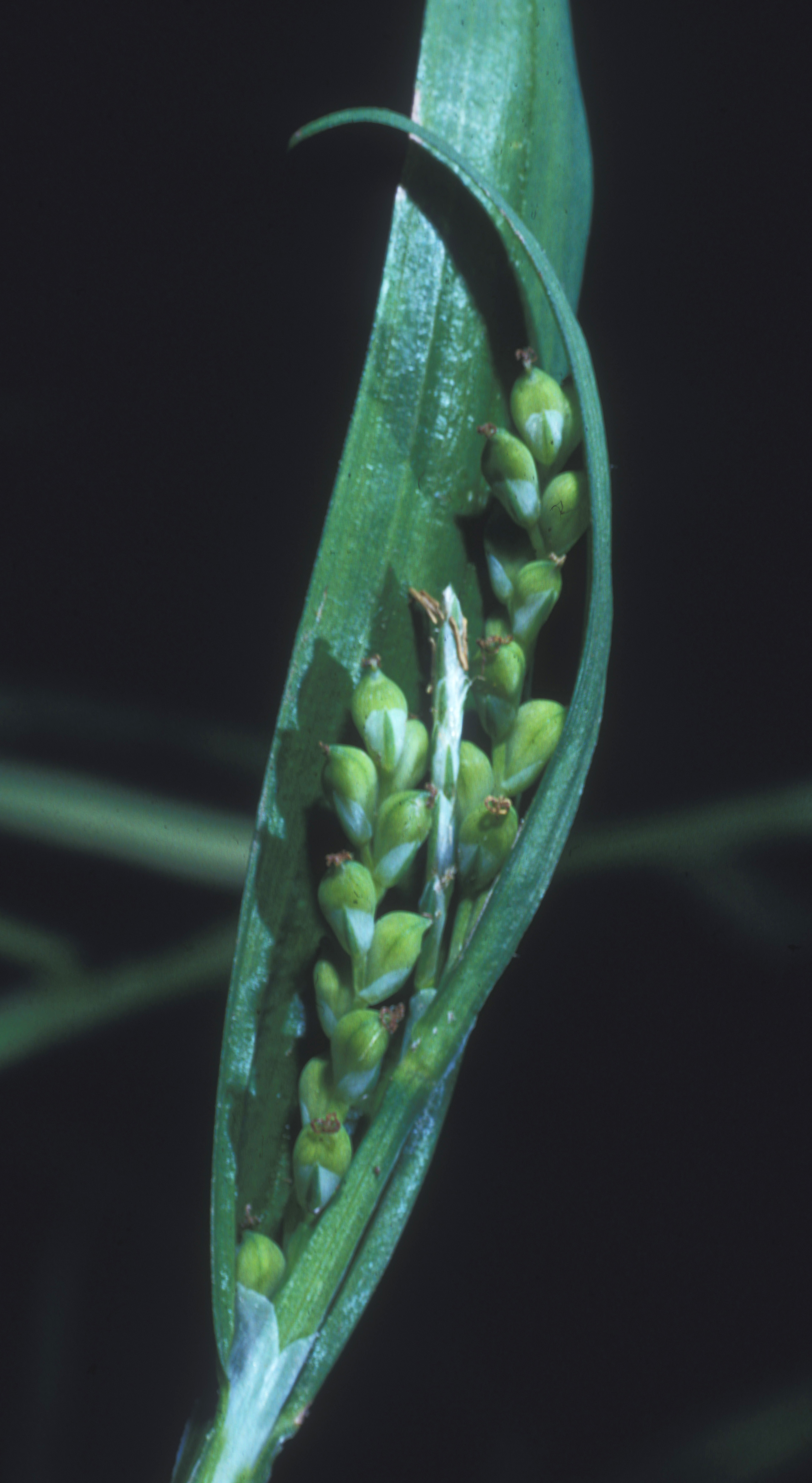Kral'S Sedge
(Carex kraliana)

Description
Culms densely tufted, slightly winged, 9.2-56 cm - 0.8-1.1 mm. Leaves: basal sheaths brown or light brown; sheaths 1-40 mm; blades erect, ascending, or lax, dark green, midrib well developed abaxially, margins serrulate distally, 6.2-17 - 2.8-32 cm, blades of overwintering leaves smooth Inflorescences: peduncles of lateral spikes absent; of terminal spike 1.3-7.3(-15) mm. Bracts 2-4, blade 1.2-21 cm - 2.6-11 mm, widest bract blade per plant 5.3-11 mm wide; bract blade of distal lateral spikes lanceolate or narrowly lanceolate, wider than spikes, wides bract blade of distalmost lateral spike (2.9-)3.2-8.3 mm wide. Spikes 4-5 per culm, lateral spikes 5.3-18(-23) - 3.7-4.6 mm, distal 2-3 spikes overlapping and concealed by bracts; terminal spike linear, 5.8-13(-18) - 0.9-2.1 mm wide, proximal to or overtoppped by distal 2 bracts, usually exceeded by or, sometimes, subequal to distalmost lateral spike. Pistillate scales 1.1-4.2 - 1.4-1.8 mm; body ovate, 1.1-2.2, margins usually whitish, apex acute and awnless or awned, awn 0-2.2 mm. Staminate scales 1.9-3.8 - 0.8-1.5 mm, apex obtuse or acute, awnless. Anthers 1.8-2.3 mm. Perigynia 3-8(-14) per spike, spirally overlapping, aggregated, 29-34-veined, ovate or oblong, faces flat or slightly convex, 2.7-4.2(-5) - 1.3-1.7(-1.8) mm, base abruptly contracted to 0.1-0.2 mm stipe; beak excurved 30-45- from long axis of perigynium, 0.2-0.6(-1) mm wide. Achenes 1.9-2.5(-2.9) - 1.2-1.6(-1.7). Fruiting spring. Mesic deciduous or mixed deciduous-evergreen forests, calcareous to circumneutral soils; 50-800 m; Ala., Ark., Fla., Ga., Ind., Ky., La., Md., Miss., N.C., Ohio, S.C., Tenn., Tex., Va. Carex kraliana is similar to several other species of sect. Laxiflorae, including C. albursina, C. blanda, C. crebriflora, C. laxiflora, and C. leptonervia. Older specimens of C. kraliana bear identifications most often of C. blanda, C. crebriflora, and C. laxiflora var. serrulata F. J. Hermann. Examination of the type of C. laxiflora var. serrulata reveals it is C. laxiflora rather than C. kraliana. Because of that confusion, reports of C. laxiflora var. serrulata from the southeastern United States should be examined closely. See discussion under 264. C. laxiflora.
Taxonomic tree:







